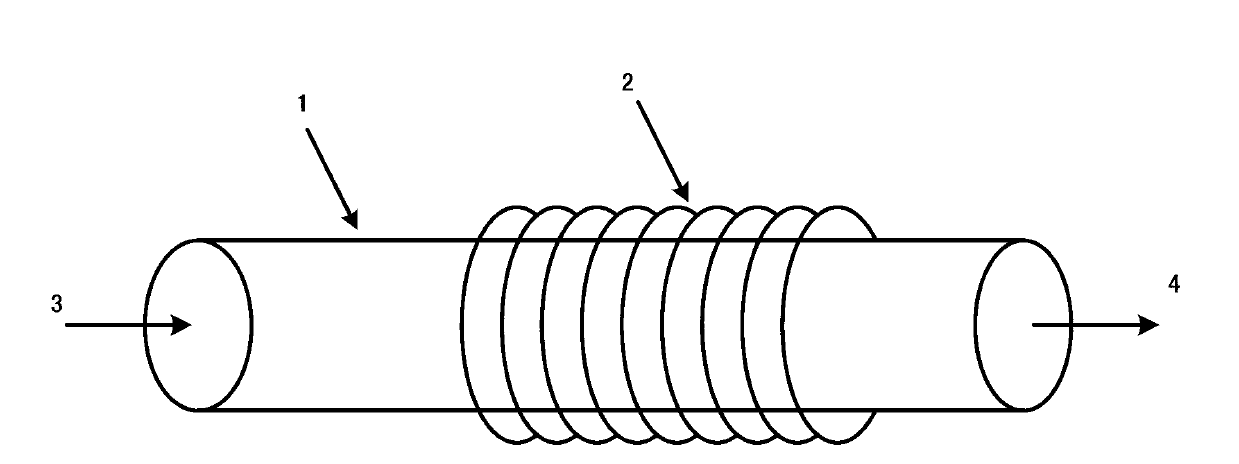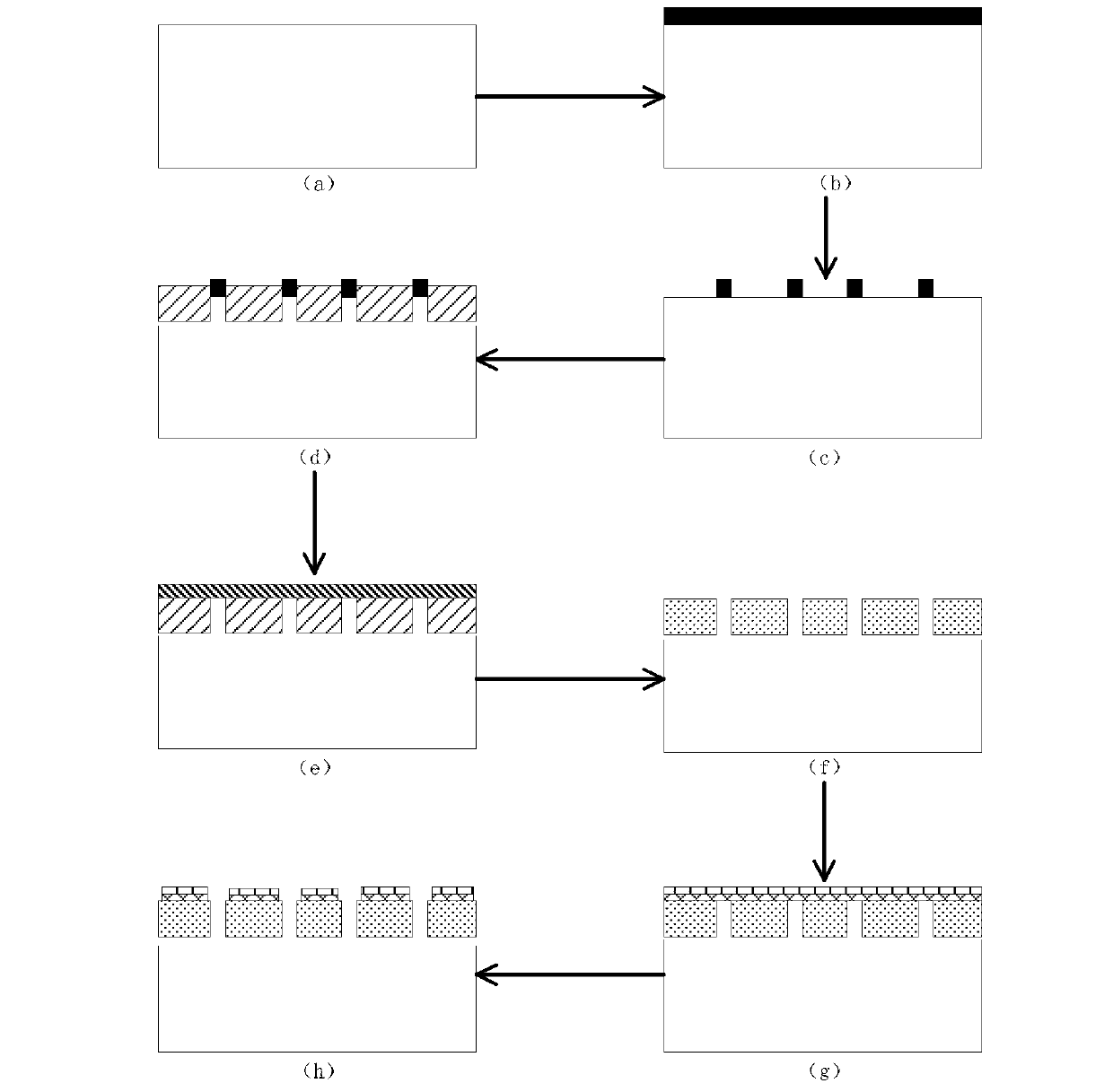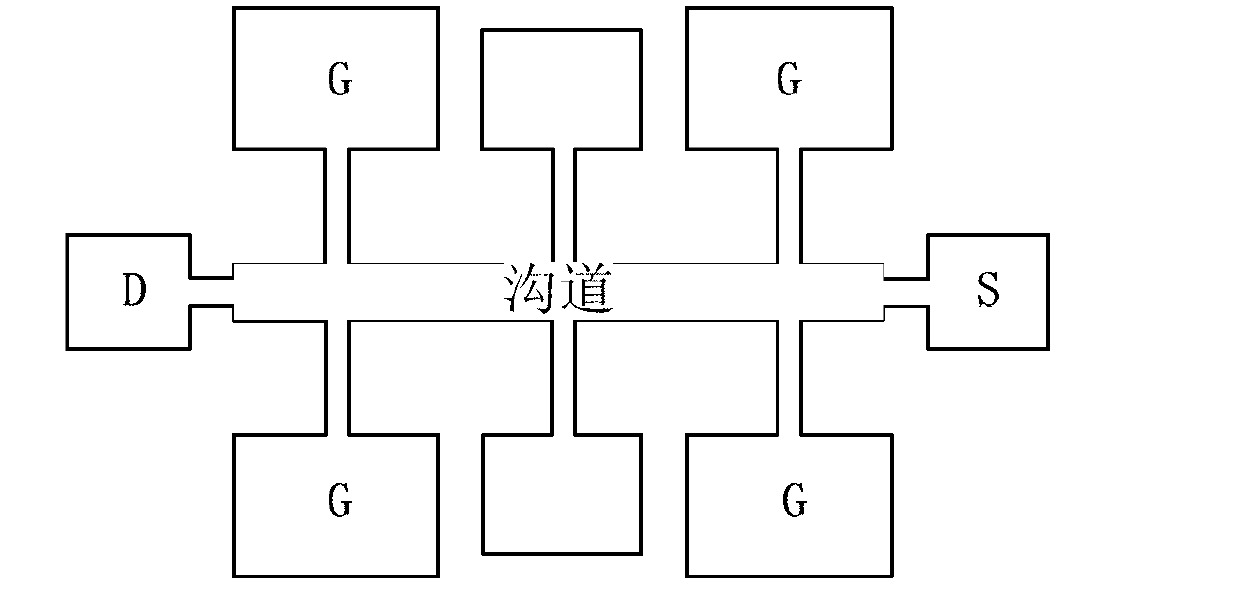Nickel (Ni) film annealing side gate graphene transistor preparation method based on reaction of silicon carbide (SiC) and chlorine gas
A graphene and transistor technology, applied in the field of microelectronics, can solve the problems of top-gate GFET mobility decline, graphene film is easily damaged, and energy consumption is large, and achieves fast reaction rate, easy control of thickness, and low porosity Effect
- Summary
- Abstract
- Description
- Claims
- Application Information
AI Technical Summary
Problems solved by technology
Method used
Image
Examples
Embodiment 1
[0039] refer to figure 2 , the steps of making connection type side gate graphene transistor of the present invention are as follows:
[0040] Step 1: Wash the 6H-SiC sample to remove surface contaminants such as figure 2 (a).
[0041] (1.1) Use NH for 6H-SiC substrate 4 OH+H 2 o 2 Soak the sample in the reagent for 10 minutes, take it out and dry it to remove the organic residue on the surface of the sample;
[0042] (1.2) Use HCl+H on the 6H-SiC sample after removing the surface organic residues 2 o 2 The reagent soaked the sample for 10 minutes, took it out and dried it to remove ionic contamination.
[0043] Step 2: Deposit a layer of SiO on the surface of the 6H-SiC sample 2 ,Such as figure 2 (b).
[0044] (2.1) Put the cleaned 6H-SiC sample into the PECVD system, adjust the internal pressure of the system to 3.0Pa, adjust the RF power to 100W, and adjust the temperature to 150°C;
[0045] (2.2) Introduce SiH with flow rates of 30sccm, 60sccm and 200sccm int...
Embodiment 2
[0072] refer to Figure 4 , the present invention makes the steps of the non-connected side-gate graphene transistor as follows:
[0073] Step 1: Clean the 4H-SiC sample to remove surface contaminants such as Figure 4 (a).
[0074] (1.1) Use NH for 4H-SiC substrate 4 OH+H 2 o 2 Soak the sample in the reagent for 10 minutes, take it out and dry it to remove the organic residue on the surface of the sample;
[0075] (1.2) Use HCl+H on the 4H-SiC sample after removing the surface organic residues 2 o 2 The reagent soaked the sample for 10 minutes, took it out and dried it to remove ionic contamination.
[0076] Step 2: Deposit a layer of SiO on the surface of the 4H-SiC sample 2 ,Such as Figure 4 (b).
[0077] (2.1) Put the cleaned 4H-SiC sample into the PECVD system, adjust the internal pressure of the system to 3.0Pa, adjust the RF power to 100W, and adjust the temperature to 150°C;
[0078] (2.2) Introduce SiH with flow rates of 30sccm, 60sccm and 200sccm into the...
Embodiment 3
[0105] refer to Figure 4 , the steps of making non-connected side gate graphene transistor of the present invention are as follows:
[0106] Step A: Use NH on the 6H-SiC substrate substrate 4 OH+H 2 o 2 Soak the sample in the reagent for 10 minutes, take it out and dry it to remove the organic residue on the surface of the sample; use HCl+H 2 o 2 Soak the sample in the reagent for 10 minutes, take it out and dry it to remove ionic contaminants such as Figure 4 (a).
[0107] Step B: Put the cleaned 6H-SiC sample into the PECVD system, adjust the internal pressure of the system to 3.0Pa, adjust the radio frequency power to 100W, and adjust the temperature to 150°C; the flow rates into the system are respectively 30sccm, 60sccm and 200 sccm of SiH 4 , N 2 O and N 2 , the duration is 60min, making SiH 4 and N 2 O reaction, a layer of 0.8 μm thick SiO was deposited on the surface of the 6H-SiC sample 2 mask layer, such as Figure 4 (b).
[0108] Step C: On SiO 2 Th...
PUM
| Property | Measurement | Unit |
|---|---|---|
| Thickness | aaaaa | aaaaa |
| Thickness | aaaaa | aaaaa |
Abstract
Description
Claims
Application Information
 Login to View More
Login to View More - R&D
- Intellectual Property
- Life Sciences
- Materials
- Tech Scout
- Unparalleled Data Quality
- Higher Quality Content
- 60% Fewer Hallucinations
Browse by: Latest US Patents, China's latest patents, Technical Efficacy Thesaurus, Application Domain, Technology Topic, Popular Technical Reports.
© 2025 PatSnap. All rights reserved.Legal|Privacy policy|Modern Slavery Act Transparency Statement|Sitemap|About US| Contact US: help@patsnap.com



